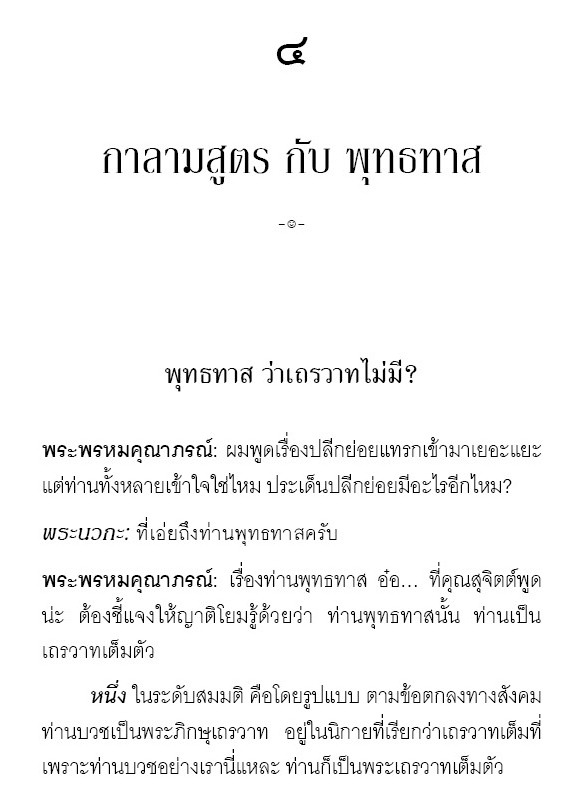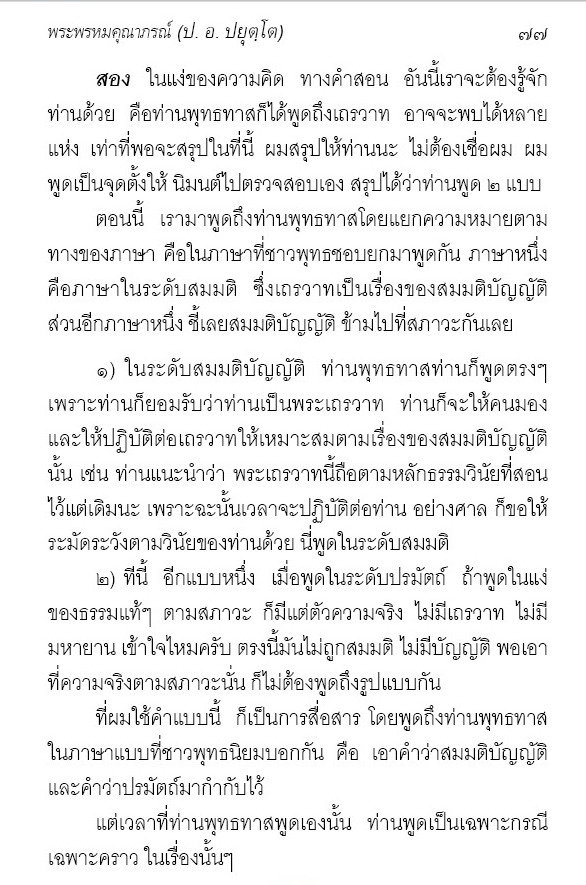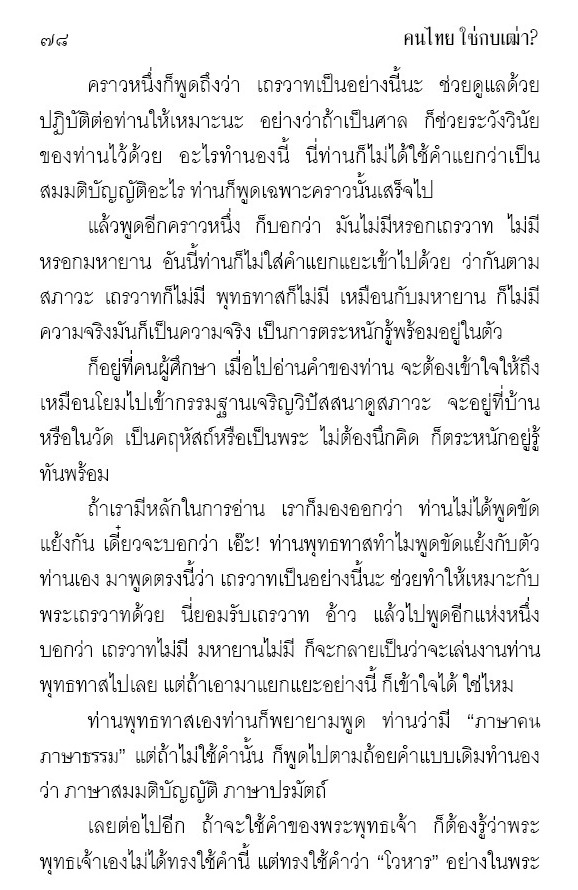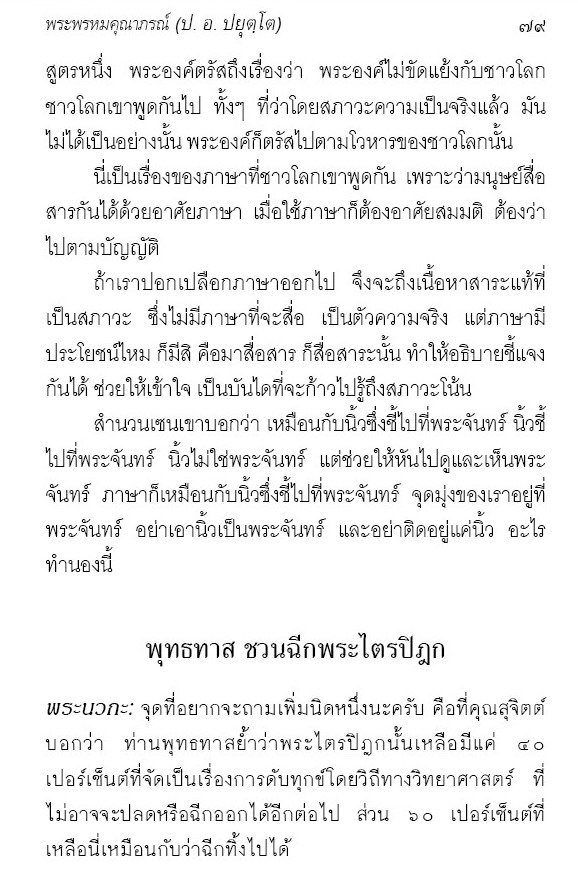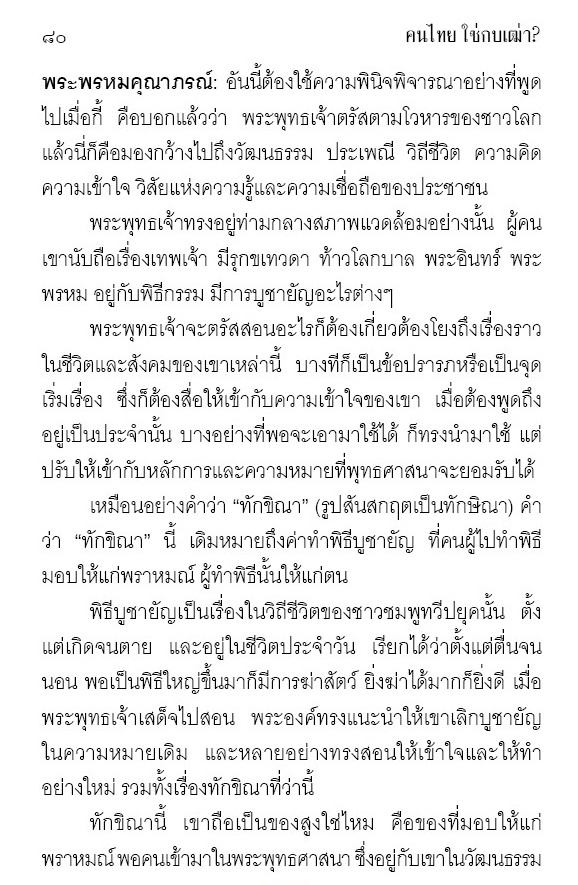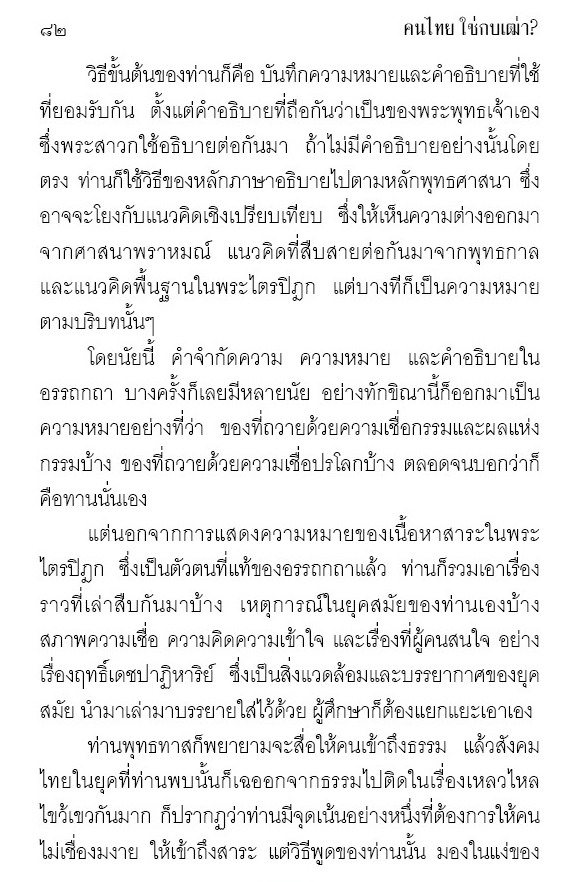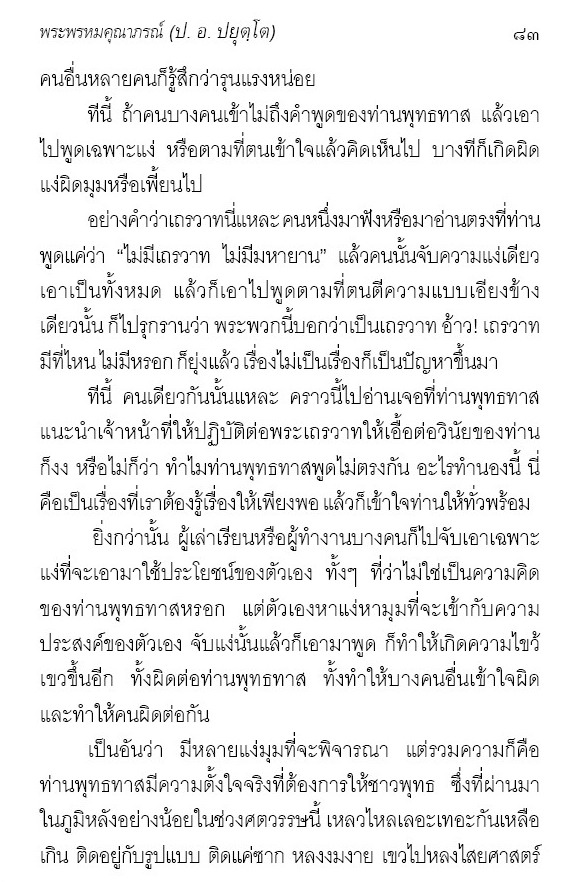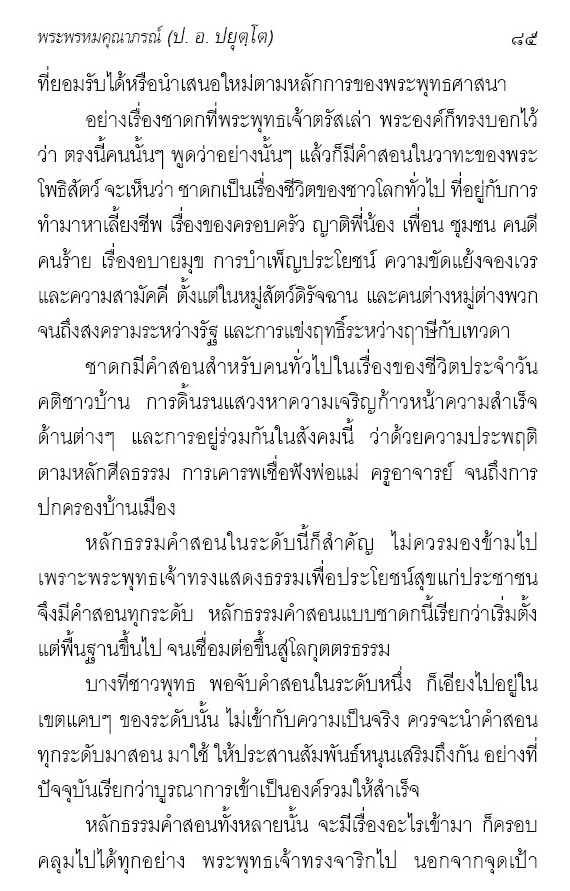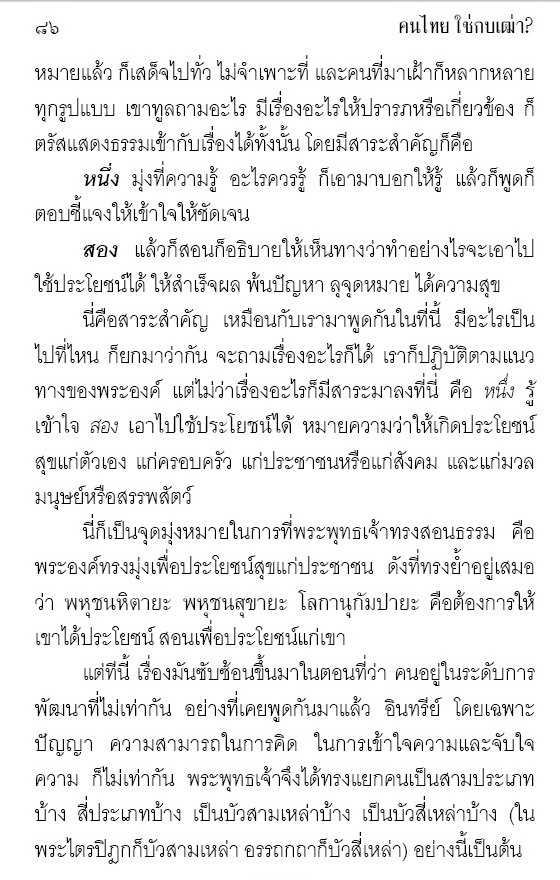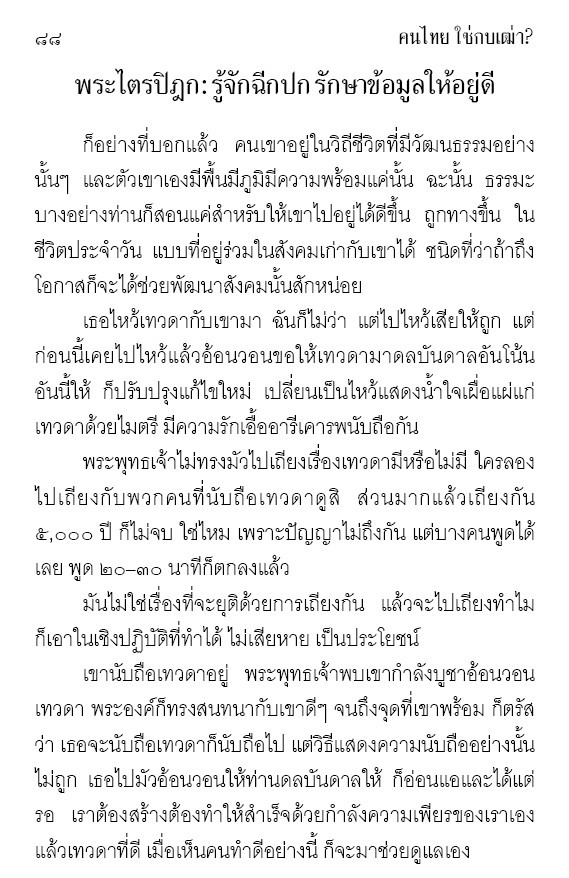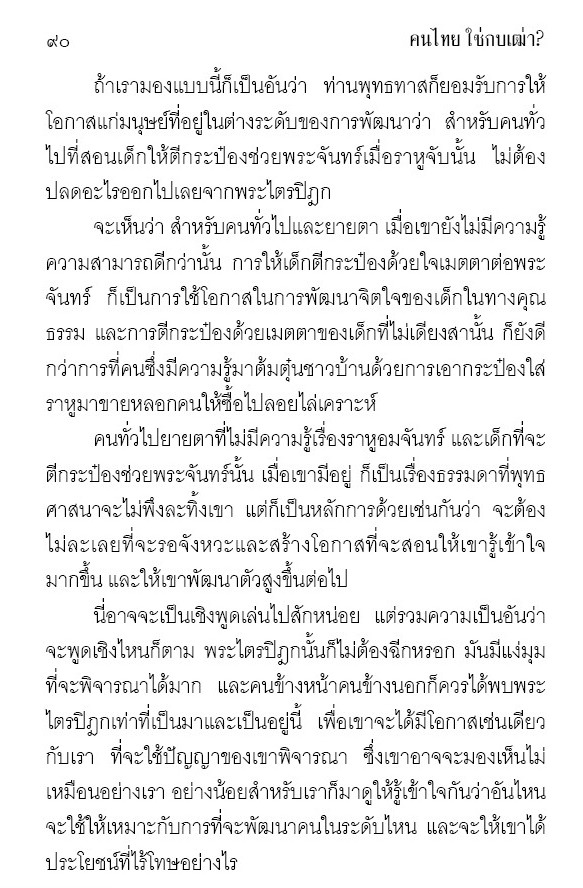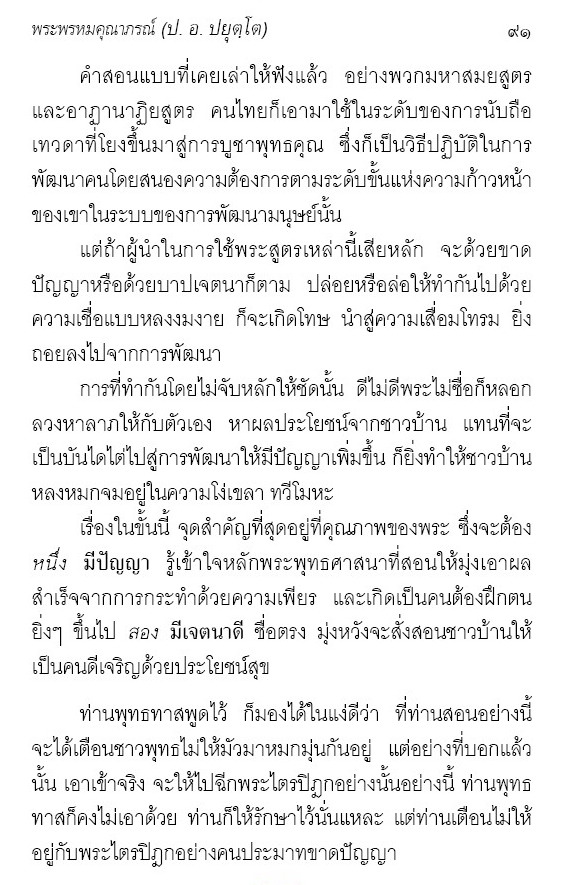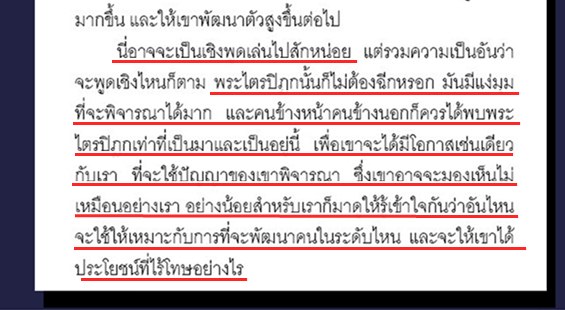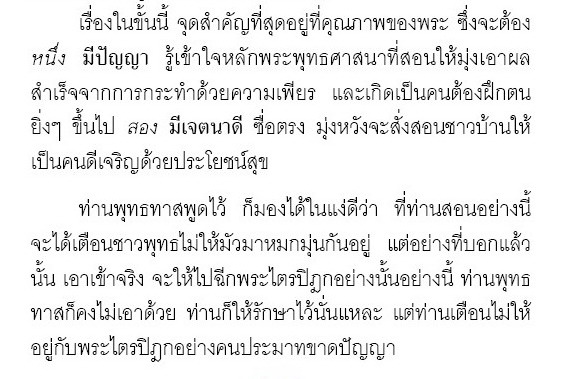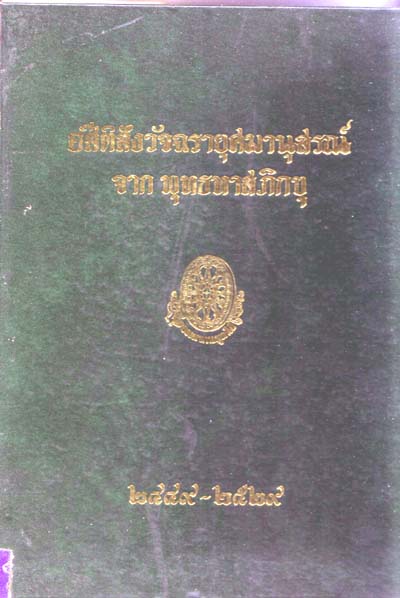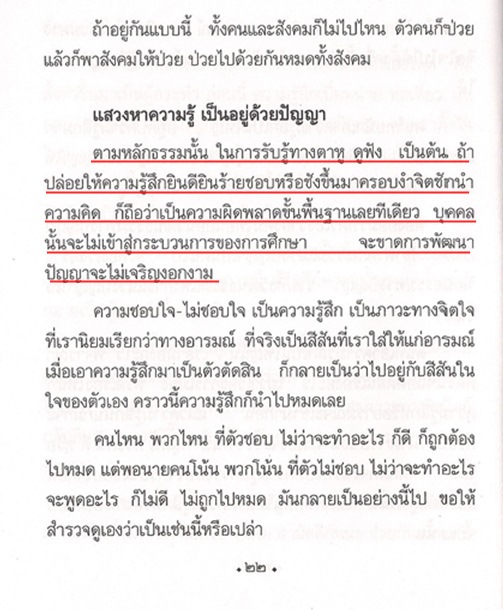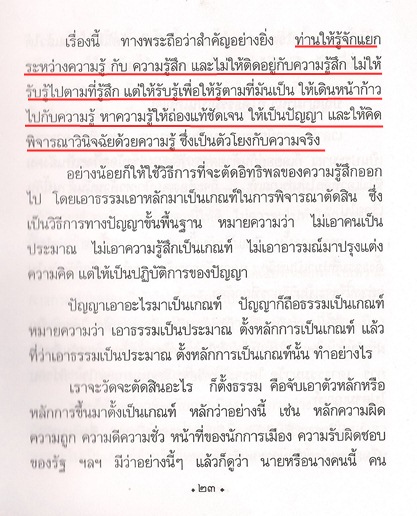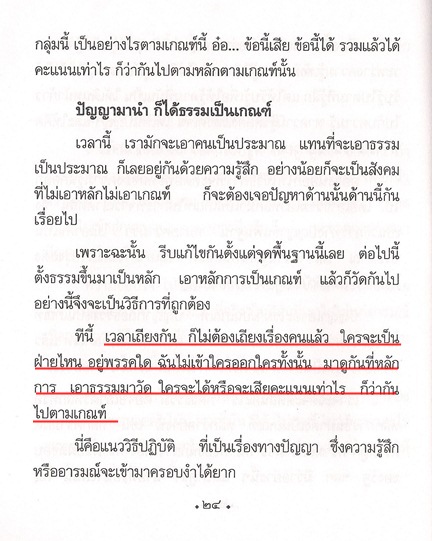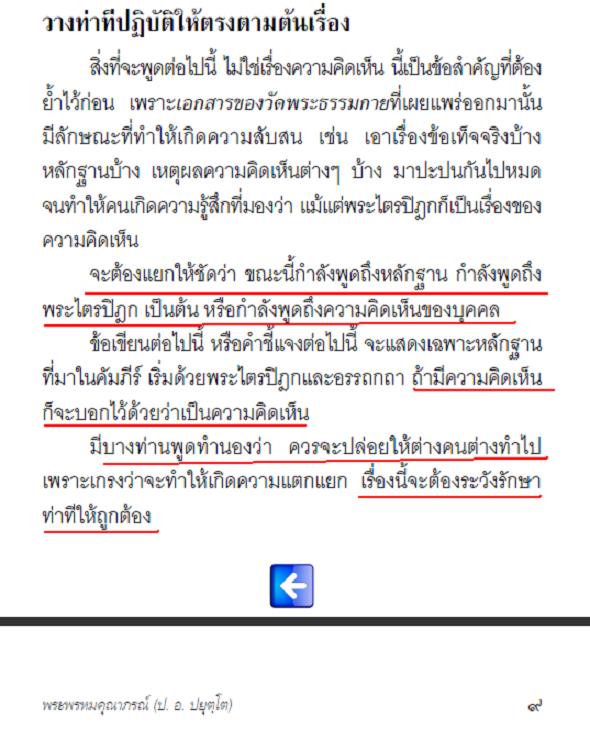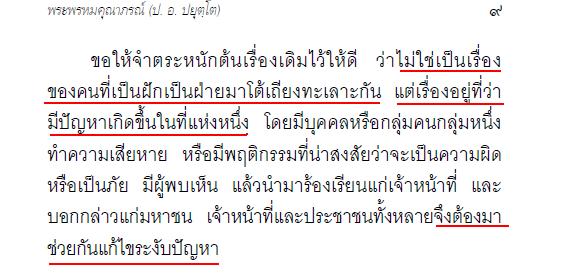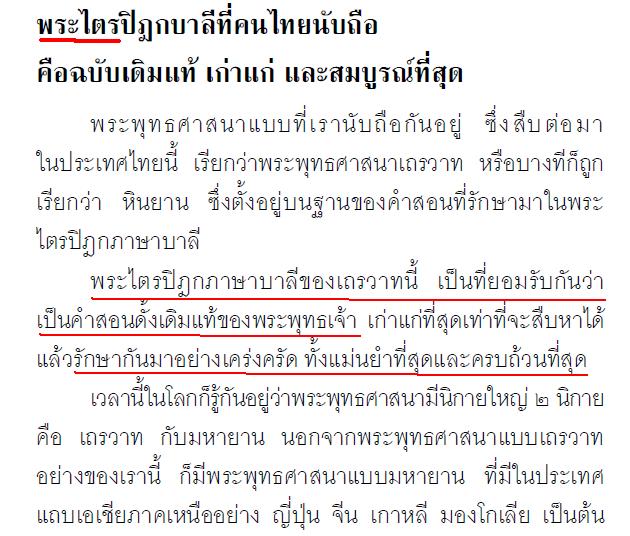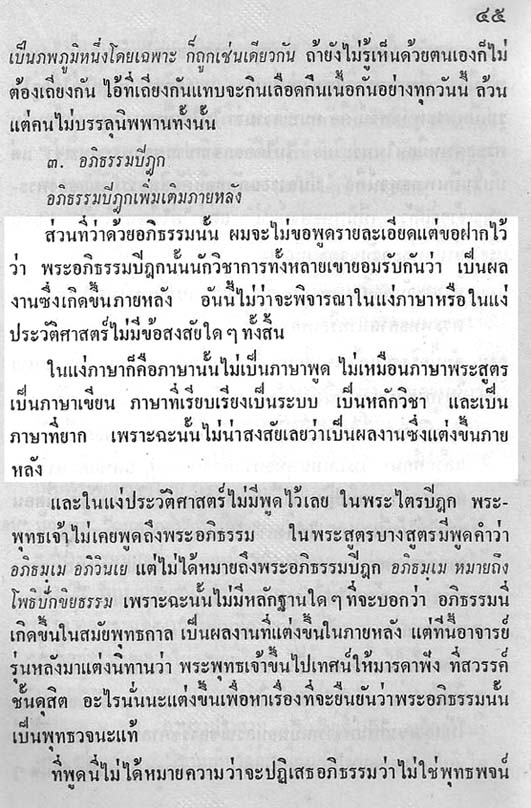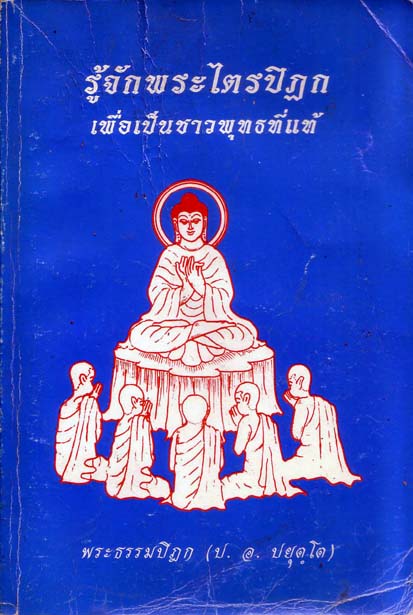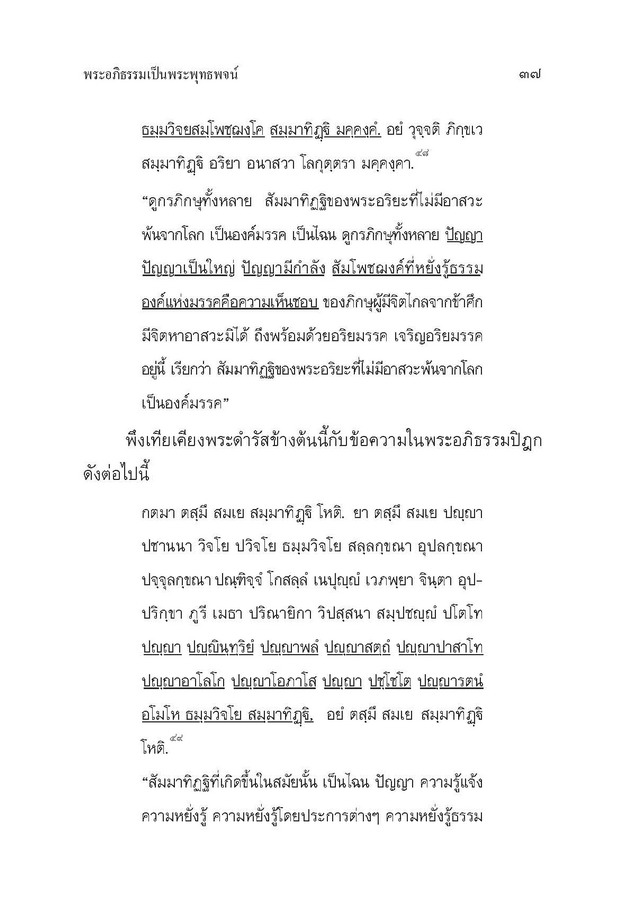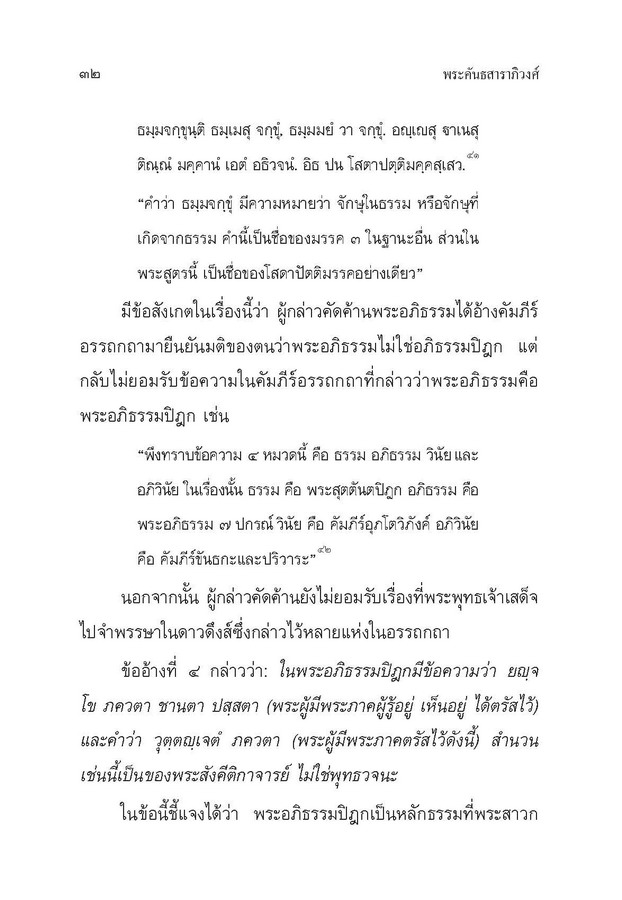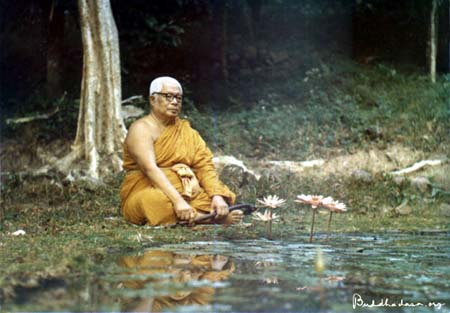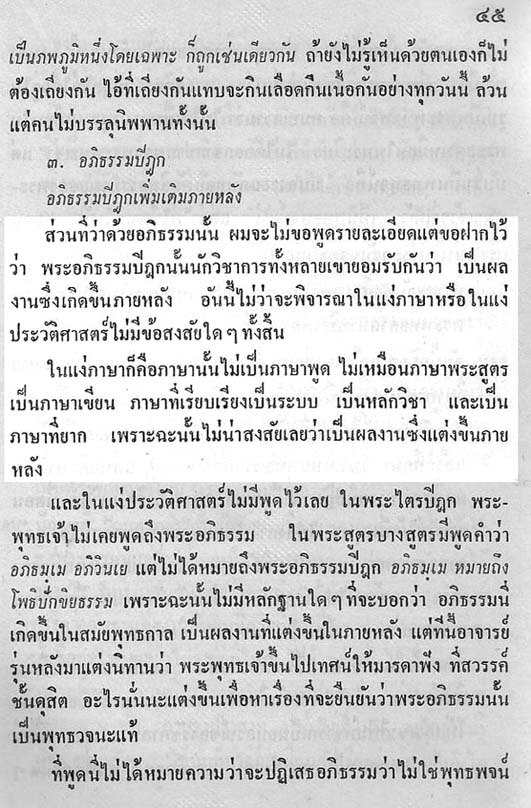 |
The Abhidharma attempts to individuate and determine the unique identity of each dharma yield complex intersecting taxonomies of dharmas organized by multiple criteria or sets of qualities. Abhidharma texts of different schools proposed different dharma taxonomies, enumerating a more or less finite number of dharma categories. It is important to remember, though, that the term dharma signifies both any category that represents a type of occurrence as well as any of its particular tokens or instances. The Theravāda introduced a system of eighty-two dhamma categories, meaning that there are eighty-two possible types of occurrence in the experiential world, not eighty-two occurrences. These are organized into a fourfold categorization. The first three categories include the bare phenomenon of consciousness (citta) that encompasses a single dhamma type and of which the essential characteristic is the cognizing of an object; associated mentality (cetasika) that encompasses fifty-two dhammas; and materiality or physical phenomena (rūpa) that include twenty-eight dhammas that make up all physical occurrences (Abhidh-av 1). All the eighty-one dhamma types in these three broad categories are conditioned (saṅkhata). Conditioned dhammas arise and cease subject to numerous causes and conditions and constitute sentient experience in all realms of the round of rebirth (saṃsāra).[7] The eighty-second dhamma that comprises the fourth category is unconditioned (asaṅkhata): it neither arises nor ceases through causal interaction. The single occurrence in this fourth category is nirvana (Pali, nibbāna). The Sarvāstivāda adopted a system of seventy-five basic types of dharmas organized into a fivefold categorization. The first four categories comprise all conditioned (saṃskṛta) dharmas and include, again, consciousness (citta, one single dharma); associated mentality (caitta, encompasses forty-six dharmas); and physical phenomena (rūpa, eleven dharmas); but also factors dissociated from thought (cittaviprayuktasaṃskāra, fourteen dharmas). The last category is mentioned neither in the sūtras nor in the Theravāda lists, but is found predominantly in northern Indian Abhidharma texts of all periods. The specific dharmas included within it vary, but they are all understood as explaining a range of experiential events, being themselves dissociated from both material form and thought. The fifth category in the Sarvāstivāda taxonomy, that of the unconditioned (asaṃskṛta), comprises three dharmas, namely, space and two states of cessation (nirodha), the latter being a term that connotes the culmination of the Buddhist path (Cox 1995; 2004A, 553554). The Abhidharma analyzes in great detail each of these categories, thus creating relational schemata whereby each acknowledged experience, phenomenon, or occurrence can be determined and identified by particular definition and function. Especially important is the analysis of consciousness or citta, on which much of Abhidharma doctrinal thought is built. Consider the Theravāda analysis of consciousness, whose basic principles are shared with the other Abhidharma systems. The epitome of the operation of consciousness is citta as experienced in the process of sensory perception that, in Abhidharma (as in Buddhism in general), is deemed the paradigm of sentient experience. Citta can never be experienced as bare consciousness in its own origination moment, for consciousness is always intentional, directed to a particular object that is cognized by means of certain mental factors. Citta, therefore, always occurs associated with its appropriate cetasikas or mental factors that perform diverse functions and that emerge and cease together with it, having the same object (either sensuous or mental) and grounded in the same sense faculty. Any given consciousness momentalso signified by the very term cittais thus a unique assemblage of citta and its associated mental factors such as feeling, conceptualization, volition, or attention, to name several of those required in any thought process. Each assemblage is conscious of just one object, arises for a brief instant and then falls away, followed by another citta combination that picks up a different object by means of its particular associated mental factors. The classic Abhidhamma scheme as gleaned from the first book of the Abhidhamma-piṭaka, the Dhammasaṅgaṇi, and as organized by the commentarial tradition describes eighty-nine basic types of consciousness moments, i.e., assemblages of citta and cetasika (Dhs Book I; Vism XIV 81110; Abhidh-av 115; Abhidh-s 15). It classifies these basic citta types most broadly according to their locus of occurrence, beginning with the sense-sphere (kāmāvacara) that includes forty-five citta types, most prominently those that concern the mechanics of perception of sensuous objects; next come eighteen form-sphere (rūpāvacara) consciousnesses that concern the mind that has attained meditative absorption (jhāna); followed by eight formless-sphere (arūpāvacara) consciousnesses that constitute the mind that has reached further meditative attainments known as formless states; finally, there are eighteen world-transcending (lokuttara) consciousnesses that constitute the mind at the moment of awakening itself: these have nirvana as their object. Within these four broad categories various other classifications operate. For instance, some dhammas are wholesome, others unwholesome; some are resultant, others are not; some are motivated, others are without motivations. These attribute matrices, writes Cox (2004A, 552), form an abstract web of all possible conditions and characteristics exhibited by actually occurring dharmas. The individual character of any particular dharma can then be specified in accordance with every taxonomic possibility, resulting in a complete assessment of that dharma's range of possible occurrences. Various scholars have argued that this system reflects a dynamic conception of dharmas: that Abhidharma understands dharmas as properties, activities, or patterns of interconnection that construct one's world, not as static substances (e.g., Cox 2004A, 549ff; Gethin 1992A, 149150; Nyanaponika 1998, Ch. 2 & 4; Ronkin 2005, Ch. 4; Waldron 2002, 216). For Abhidharma, as for Buddhism in general, the limits of one's world are set by the limits of one's lived experience, and the causal foundation for lived experience is the operation of one's cognitive apparatus. According to the Buddhist path, the nature of lived experience as based on one's cognitive apparatus is to be contemplated by investigating the very nature of one's mind through the practice of meditation. From this perspective, Abhidharma represents the theoretical counterpart to the practice of meditation. Within this context of Buddhist practice, dharmas are distinct (but interrelated) functions, energies, or causally significant aspectsin this sense componentsof consciousness moments. The categorial analysis of dharmas is therefore a meditative practice of discernment of dharmas: it is not intended as a closed inventory of all existing dharmas out there in their totality, but rather has a dual soteriological purpose involving two simultaneous processes (Cox 2004A, 551). First, as evaluative analysis, the dharma typology maps out the constituents and workings of the mind and accounts for what makes up ordinary wholesome consciousness as opposed to the awakened mind. For instance, consciousness types that arise in a mind that has attained meditative absorption become increasingly refined and may never involve certain tendencies or defilements that might potentially occur in ordinary (even wholesome) consciousness. To watch dharmas as dharmas, writes Gethin (2004, 536), involves watching how they arise and disappear, how the particular qualities that one wants to abandon can be abandoned, and how the particular qualities that one wants to develop can be developed. Watching dhammas in this way one begins to understand [
] certain truths (sacca)four to be exactabout these dhammas: their relation to suffering, its arising, its ceasing and the way to its ceasing. And in seeing these four truths one realizes the ultimate truthdhammaabout the world.[8] The second, descriptive soteriological process involved in the categorization of dharmas reveals the fluid nature of sentient experience and validates the fundamental Buddhist teaching of not-self (Skt., anātman, Pali, anatta). The increasingly detailed enumerations of dharmas demonstrate that no essence or independent self could be found in any phenomenon or its constituents, since all aspects of experience are impermanent, arising and passing away subject to numerous causes and conditions. Even the handful dharmas that are categorized as unconditioned (that is, having no cause and no effect) are shown to be not-self. The practice of the discrimination of dharmas thus undermines the apparently solid world we emotionally and intellectually grasp at that is replete with objects of desire and attachment. Try to grasp the world of the Dhammasaṅgaṇi, or the Paṭṭhāna, Gethin notes (1992B, 165), and it runs through one's fingers. Nevertheless, the very notion of the plurality of dharmas as the building blocks or the final units of analysis of sentient experience signifies a considerable shift in the Buddhist understanding of dharma. Abhidharma thought was gradually drawn into espousing a naturalistic explanation of dharmas as the fundamental constituents of the phenomenal world, increasingly associating dharmas as primary existents. The category of the unconditioned within the dharma taxonomy also asserted the possibility of enduring or permanent dharmas, in contrast to all other dharmas that arise and cease through causal interaction. The Abhidharma exegesis, then, occasioned among Buddhist circles doctrinal controversies that could be termed ontological around such issues as what the nature of a dharma is; what, in the internal constitution of a dharma, makes it the very particular it is; the manner of existence of dharmas; the dynamics of their causal interaction; and the nature of the reality they constitute. The distinctive principles and their ensuing ontological interpretations constructed by the Buddhist schools were largely shaped by a radical construal of impermanence as momentariness. pdf include--> 3. Time: from impermanence to momentariness Both the Sarvāstivāda and the post-canonical Theravāda constructed a radical doctrine of momentariness (Skt., kṣāṇavāda, Pali, khāṇavāda) that atomizes phenomena temporally by dissecting them into a succession of discrete, momentary events that pass out of existence as soon as they have originated. Albeit not a topic in its own right in the Buddha's discourses, the doctrine of momentariness appears to have originated in conjunction with the principle of impermanence (Skt., anitya, Pali, anicca). This idea is basic to the Buddha's empirically-oriented teaching about the nature of sentient experience: all physical and mental phenomena are in a constant process of conditioned construction and are interconnected, being dependently originated (e.g., A I 286; M I 230, 336, 500; S II 26, III 245, 969, IV 214). The Suttanta elaboration on these three interlocking ideas results in a formula (A I 152) that states that conditioned phenomena (Skt., saṃskārā, Pali, saṅkhārā) are of the nature of origination (uppāda), change of what endures (ṭhitassa aññathatta), and dissolution or cessation (vaya). This formula is known as the three characteristics of what is conditioned (tisaṅkhatalakkhaṇa). The Sarvāstivāda-Vaibhāṣika introduced four characteristics of conditioned phenomena: origination, endurance, decay, and dissolution. These are classified under the dharma category of factors dissociated from thought. The Buddhist schools used the characteristics of conditioned phenomena as a hermeneutic tool with which to reinterpret impermanence in terms of momentariness. The Sarvāstivāda-Vaibhāṣika proposed a fully-fledged doctrine of momentariness according to which all physical and mental phenomena are momentary. The Sarvāstivādins use the term moment (kṣaṇa) in a highly technical sense as the smallest, definite unit of time that cannot be subdivided, the length of which came to be equated with the duration of mental events as the briefest conceivable entities. There is no Sarvāstivādin consensus on the length of a moment, but the texts indicate figures between 0.13 and 13 milliseconds in modern terms (Gethin 1998, 221; von Rospatt 1995, 94110). This usage presupposes an atomistic conception of time, for time is not reckoned indefinitely divisible. Indeed, the term kṣaṇa is often discussed in juxtaposition to the concepts of material atoms and syllables, which are likewise comprehended as indivisible. Within the Sarvāstivāda framework, material reality (rūpa-dharma) is reduced to discrete momentary atoms, and much attention is drawn to ontological and epistemological questions such as whether sense objects are real at any time, or whether atoms contribute separately or collectively to the generation of perception. Atomic reality is understood as constantly changing: what appears to us as a world made up of enduring substances with changing qualities is, in fact, a series of moments that arise and perish in rapid succession. This process is not random, but operates in accordance with the specific capability and function of each atom. The spirit of this atomistic analysis of material reality applies equally to mental reality: consciousness is understood as a succession of discrete consciousness moments that arise and cease extremely rapidly.[9] Thus, the ratio of change between material and mental phenomena in any given moment is one to one: they occur in perfect synchronicity (Kim 1999, 54). On this point the Sautrāntika agreed with the Sarvāstivāda. The Sarvāstivādins (advocates of the doctrine that all things exist) were unique in their stance that the characteristics of conditioned phenomena exist separately as real entities within each moment. Their claim, then, is that all conditioned dharmaswhether past, present, or futureexist as real entities (dravyatas) within the span of any given moment. This induced a host of problems, one of which is that the Sarvāstivāda definition of a moment is difficult to reconcile with its conception as the shortest unit of time (von Rospatt 1995, 4446 & 9798). The Sarvāstivāda replies to this criticism by stating that the activities (kāritra) of the four characteristics of conditioned phenomena are sequential: the limits between the birth and dissolution of any event are referred to as one moment. This solution, however, implies that a single event undergoes four phases within a given moment, which inevitably infringes upon its momentariness (Cox 1995, 151; von Rospatt 1995, 52ff). The Theravādins created their own distinct version of the doctrine of momentariness. They do not seem to have been as concerned as the Sarvāstivādins with the ontology and epistemology of material and mental realities per se. Rather, they were more preoccupied with the psychological apparatus governing the process of cognizing of sense data, and hence with the changing ratio between material and mental phenomena. The Yamaka of the canonical Abhidhamma offers what is probably the first textual occurrence of the term moment (khaṇa) in the sense of a very brief stretch of time that is divided into origination and cessation instants (Kim 1999, 6061). Relying on the three characteristics of conditioned phenomena, the Pali commentaries later present a scheme wherein each moment of every phenomenon is subdivided into three different instants of origination (uppādakkhaṇa), endurance (ṭhitikkhaṇa) and cessation (bhaṅgakkhaṇa) (Spk II 266; Mp II 252). These are three phases of a single momentary phenomenon defined as one single dhamma or consciousness moment. A dhamma occurs in the first sub-moment, endures in the second, and ceases in the third. The commentarial tradition thus analyzes phenomena temporally by dissecting them into a succession of discrete, momentary events that fall away as soon as they have originated in consciousness. As one event is exhausted, it conditions a new event of its kind that proceeds immediately afterwards. The result is an uninterrupted, flowing continuum (santāna) of causally connected momentary events. These succeed each other so fast that we conceive of the phenomena they constitute as temporally extended. The Theravādins use the term khaṇa as the expression for a brief instant, the dimension of which is not fixed but may be determined by the context. For example, cittakkhaṇa refers to the instant taken by one mental event. In this basic sense as denoting a very brief stretch of time, the term moment does not entail an atomistic conception of a definite and ultimate, smallest unit of time, but leaves open the possibility that time is infinitely divisible (von Rospatt 1995, 5960 & 9495). Here the three moments of origination, endurance, and cessation do not correspond to three different entities. Rather, they represent three phases of a single momentary phenomenon and are defined as one single consciousness moment: a dhamma occurs in the first sub-moment, endures in the second sub-moment and perishes in the third one. In this way, the Theravādins avoided some of the difficulties faced by the Sarvāstivāda-Vaibhāṣikas, of how to compress the characteristics of the conditioned into one single indivisible moment and of how to account for their ontological status. The Theravādins also claimed that only mental phenomena are momentary, whereas material phenomena (e.g., common-sense objects) endure for a stretch of time. The Theravādin commentarial tradition subsequently elaborated on this proposition and produced a unique view of the ratio between material and mental phenomena, asserting that a material phenomenon lasts for sixteen or seventeen consciousness moments (Kv 620; Vibh-a 2528; Vism XX 2426; Kim 1999, 7980 & §3.1). Despite their different interpretations of the concept of momentariness, the early Buddhist schools all derived this concept from the analysis of impermanence in terms of the dynamics of dharmas qua physical and mental events. The equation of a moment with the duration of these transient events as extremely short occurrenceseven the shortest conceivableled to the direct determination of the moment in terms of these occurrences. Yet the doctrine of momentariness spawned a host of problems for the Buddhist schools, particularly with regard to the status of the endurance moment and to the explanation of continuity and conditioning interaction among the dharmas (see section 5 below). If dharmas go through an endurance phase or exist as real entities within the span of any given moment, how can they be momentary? And if experience is an array of strictly momentary dharmas, how can continuity and causal conditioning be possible? One might argue that the conceptual shift from impermanence to endurance is a result of scholastic literalism and testifies to the Abhidharma tendency towards reification and hypostatization of dharmas (Gombrich 1996, 3637, 9697 & 106107). Nevertheless, the object of the doctrine of momentariness is not so much existence in time or the passage of time per se, but rather, in epistemological terms and a somewhat Bergsonian sense, the construction of temporal experience. Instead of a transcendental matrix of order imposed on natural events from without, time is seen as an inherent feature of the operation of dharmas. The doctrine of momentariness analyzes dharmas as they transpire through time: as psycho-physical events that arise and cease in consciousness and, by the dynamics of their rise and fall, construct time. The sequence of the three times is therefore secondary, generated in and by the process of conditioned and conditioning dharmas. In fact, the conceptual shift from the principle of impermanence to the theory of momentariness is a shift in time scales. While the Sūtrānta worldview interprets the three times as referring to past, present, and future lives, the Abhidharma sees them as phases that any conditioned dharma undergoes each and every moment. Impermanence marks dharmas over a period of time, but is also encapsulated in every single consciousness moment (Vibh-a 78; Sv 991; Vism XIV 191; Collins 1992, 227).
แก้ไขเมื่อ 17 พ.ย. 53 23:30:14
| จากคุณ |
:
Uncle-Dave 
|
| เขียนเมื่อ |
:
17 พ.ย. 53 23:24:33
|
|
|
|
 |

